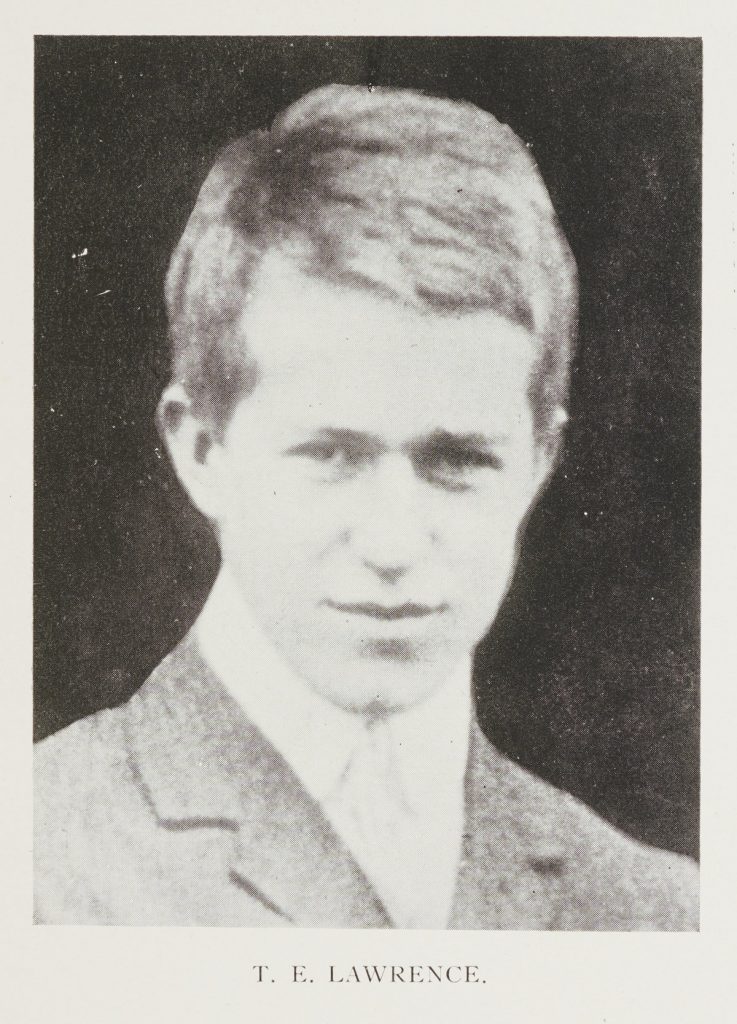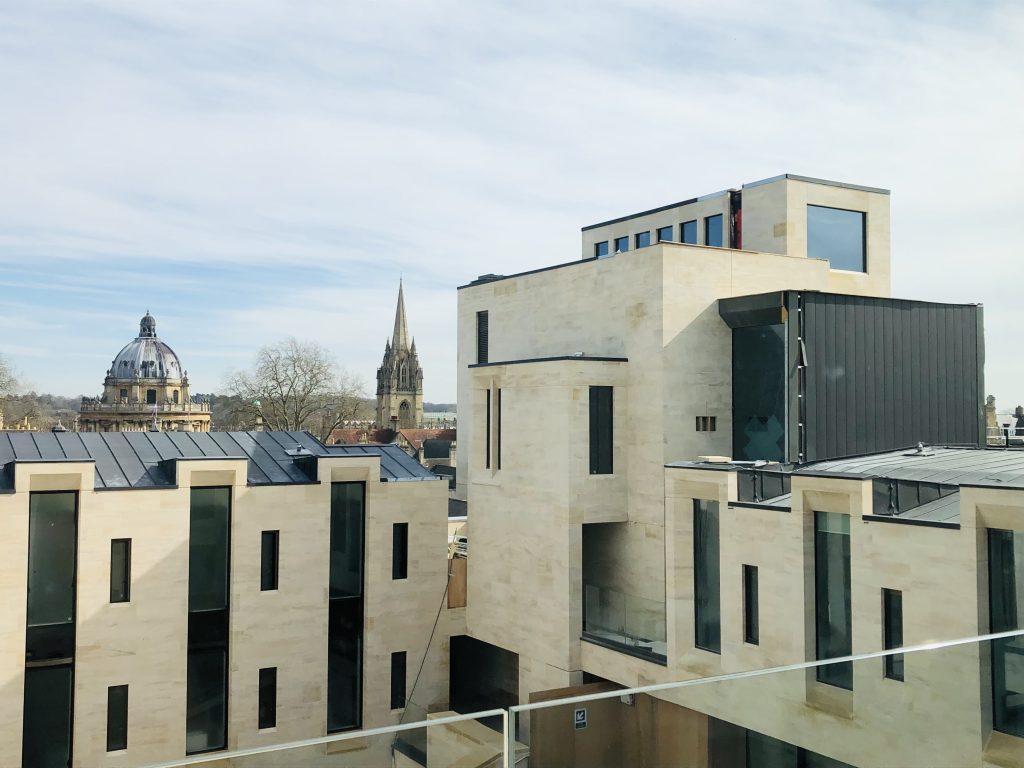There are few more poignant images in our archives than that of the College’s Torpid crew of 1914, seated in front of a Second Quad staircase dulled by soot and shrouded in creeping ivy. Taken just months before the outbreak of the First World War, this treasured photograph shows nine young men in their prime, suited and booted, with perfectly-waxed hair and full of confidence.
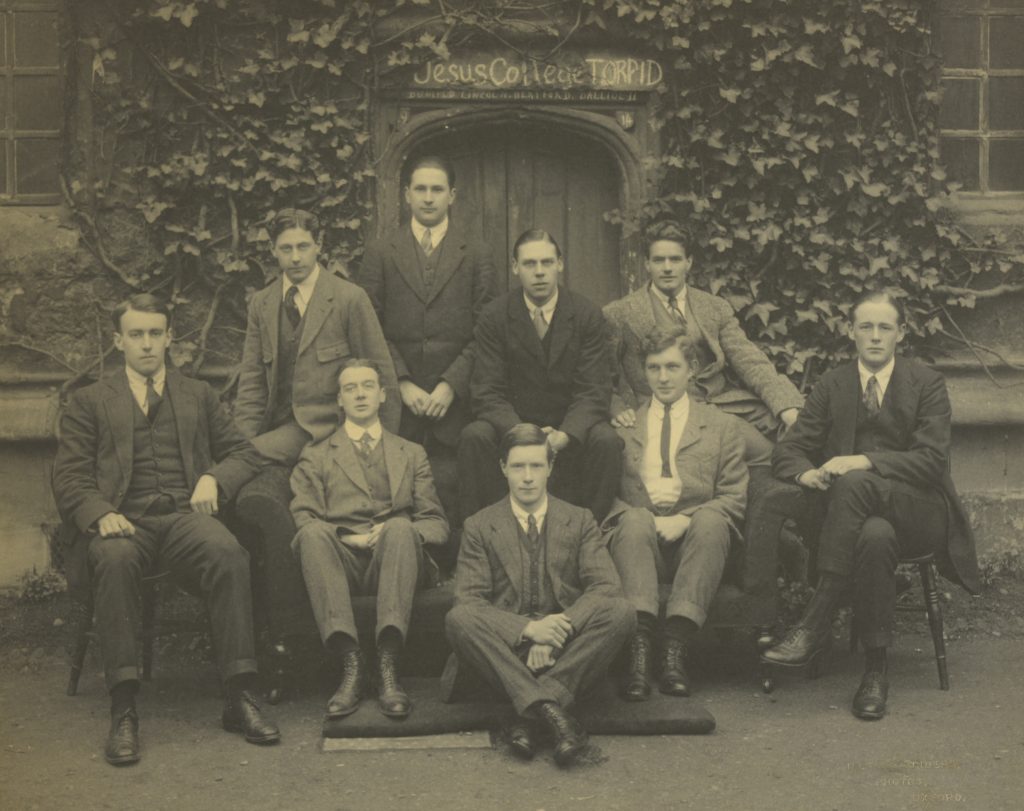
The Jesus College Boat Club Torpid Crew of 1914. Back row, from left to right: Walter Hankinson (1913, Mathematics), Wilfred Davies (1913, Mathematics), Lionel Collier (1911, Mathematics), Robert Norwood (1912, Chemistry). Middle row from left to right: Angus Buchanan (1913, Classics), James Herbertson (1911, Modern Languages), Reginald Champion ( 1913, Natural Sciences), Noel Morris (1913, Modern History). Front: Geoffrey Reeves (1913, Classics). Credit: Jesus College, Oxford
A year later, and every member of this crew had gone to fight in the Great War. Only four would return. The war wrought tragedy and loss on a global scale, and its impact was felt deeply within our community. An inscribed plaque in the College ante-chapel lists the sixty-four College members who lost their lives. It is certain that each would have had their own story of courage and bravery to tell, had they survived. There is, however, an important story that can be told and it concerns one particular member of that 1914 Torpid crew – a student who survived the war, and against all the odds, returned to Jesus complete his studies.
Angus Buchanan was a doctor’s son who had attended Monmouth Grammar School and came up in 1913 on a Welsh Classical Scholarship. His tutor noted that he was “a hard worker, and likely to be a good influence in College.” By Hilary term 1914, he had made his mark in sports, becoming a member of both the College’s rugby team, and the Torpid crew. As J.N.L. Baker, a former Bursar and contemporary of Buchanan’s, remembered in his obituary (Jesus College Magazine, 1944):
“He quickly made his mark in games. As a Rugby forward his hooking was excellent and his all-round play noteworthy. On the river, rowing four at 12 stone 2lbs, he helped the Torpid to put Jesus in a higher place than it had been for fifteen years.”
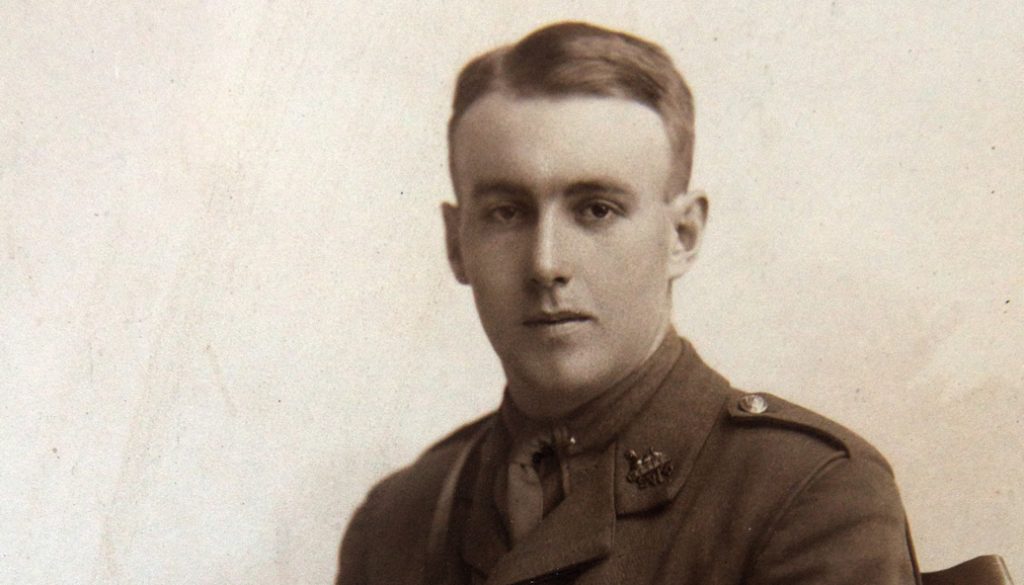
An image of Angus Buchanan taken 1914 Credit: Monmouth Grammar School
When war broke out Buchanan enlisted, joining the South Wales Borderers. He headed east to Gallipoli, where the trench warfare that typified the Anglo-French campaign against Turkey echoed the brutal fighting of the Western Front. Despite being wounded, he was awarded the Military Cross for ‘exceptional gallantry during active operations’ and promoted to Captain.
Mesopotamia followed for the young soldier, and it is here on 5th April 1916 that Buchanan – still only 21 – carried out an act of such bravery and benevolence that he was awarded the Victoria Cross (VC). The citation for his VC reads:
“For most conspicuous bravery. During an attack an officer was lying out in the open severely wounded, about 150 yards from cover. Two men went to his assistance and one of them was hit once. Captain Buchanan, on seeing this, immediately went out, and with the help of the other man, carried the wounded officer to cover under heavy machine gun fire. He then returned and brought in the wounded man, again under heavy fire.”
He was also awarded the Russian Order of St Vladimir 4th Class for his actions.
Wounded for a second time in the attack, Buchanan spent some time in rehabilitation before stoically returning to Mesopotamia in 1917. However his return to the frontline was tragically short-lived. In March of that year, while fighting in Kurt, he was shot in the head by a Turkish sniper, and blinded. For a lesser man, the burden of such a catastrophic injury might have been too much, but, as J.N.L. Baker remembered, Buchanan drew on his own bravery again.
“This cruel blow did not daunt him. He came back to Oxford determined to be an ordinary undergraduate. Every branch of College life he followed with great interest and intimate knowledge.”
As well as restarting his degree (he switched from Classics to Law), Buchanan returned to the river – rowing in the College First Eight during Hilary term 1919. He was also a familiar face on the touch line when Jesus were playing rugby. In the Torpid crew photo taken that year, the physical suffering that Buchanan had endured is clear to see, but he did not court sympathy or preferential treatment.
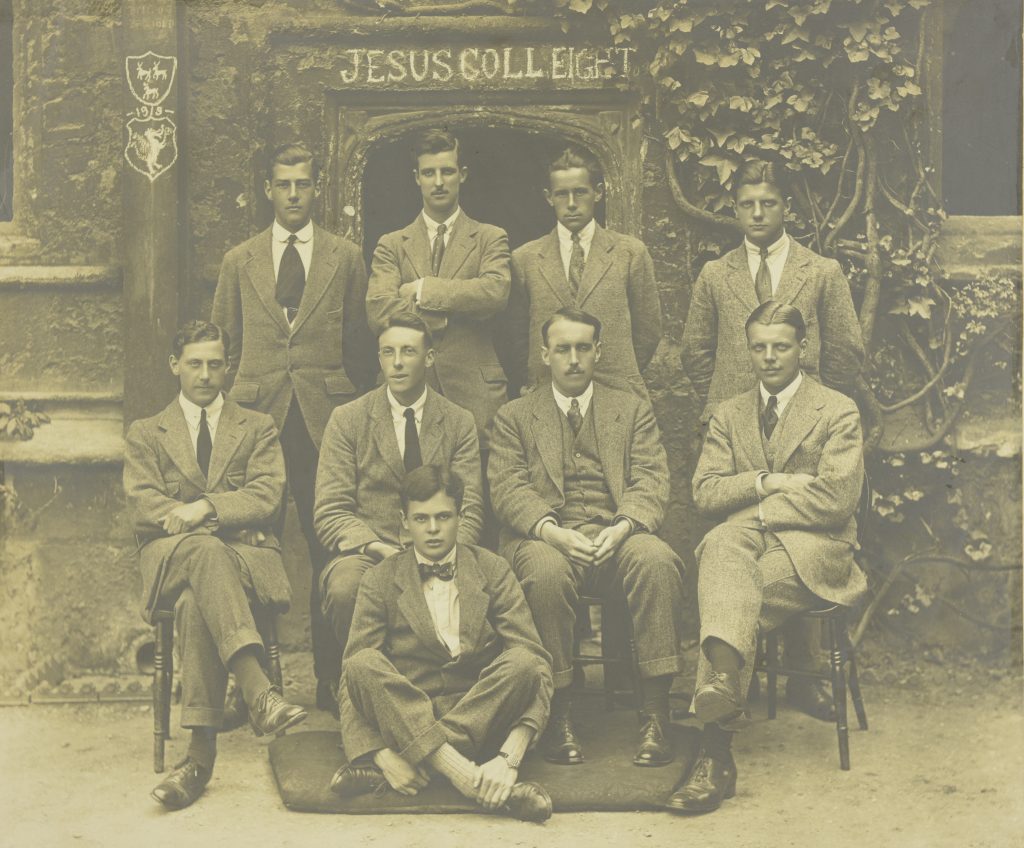
The Torpid crew of 1919, with Buchanan seated in the middle row, third from left. All bar one of the 1919 crew had seen action during the war. Credit: Jesus College, Oxford
Baker said, “His unassumed modesty, great courage and open friendliness made him perhaps the best liked man in College, and one felt that one was the better for knowing him.”
Little is known of the help that the now-blinded Buchanan received with his studies. However, College Archivist Dr Robin Darwall-Smith observes in an article from Jesus News 2018, that “the Vice-Principal, Ernest Hardy (who became Principal in 1921) had been blind for many years. In Hardy, Buchanan could find the perfect role model.” He was certainly well-known and highly respected in College, and more widely, as the heroic undergraduate VC. Notes in the College archives show that he chaired the first post-war meeting of the Junior Common Room on 3 May 1919, and in January 1921, it was Buchanan who unveiled a War Memorial in the old Junior Common Room (now the War Memorial Room).
He also became friends with another famous Jesus alumnus – T.E. Lawrence, with whom he would dine regularly. Robin says, “Both Lawrence and Buchanan were heroes to the outside world, as “Lawrence of Arabia” and “Buchanan the Undergraduate VC”. But when they were alone together, the two men could lay aside their heroic personas: they were each with perhaps the only man in Oxford who really understood them.”
After graduating in 1921, Buchanan trained as a solicitor. He returned to practise in his hometown of Coleford in Gloucestershire, where he lived until his early death at the age of 49 – a death accelerated by the wounds he had sustained in combat.
But that is not the end of Buchanan’s story. Firstly, we can see the man himself to this day, in British Pathe News footage from his VC investiture in 1917, which shows a dapper Buchanan being presented with his medal by King George V, and being led to and from the dais. His old school Monmouth Grammar (now Haberdashers’ Monmouth Schools) never forgot their most-decorated alumnus: Buchanan House (home to Year 13 boarders) bears his name ‘as a fitting memorial to an Old Monmothian for his courage, physical bravery, lack of bitterness in the face of adversity and generosity of spirit”. The recreation ground in Coleford, which sits adjacent to the cemetery where Buchanan is buried, was also named in his honour. And of course his inspirational story features in numerous military history books and on related military websites.
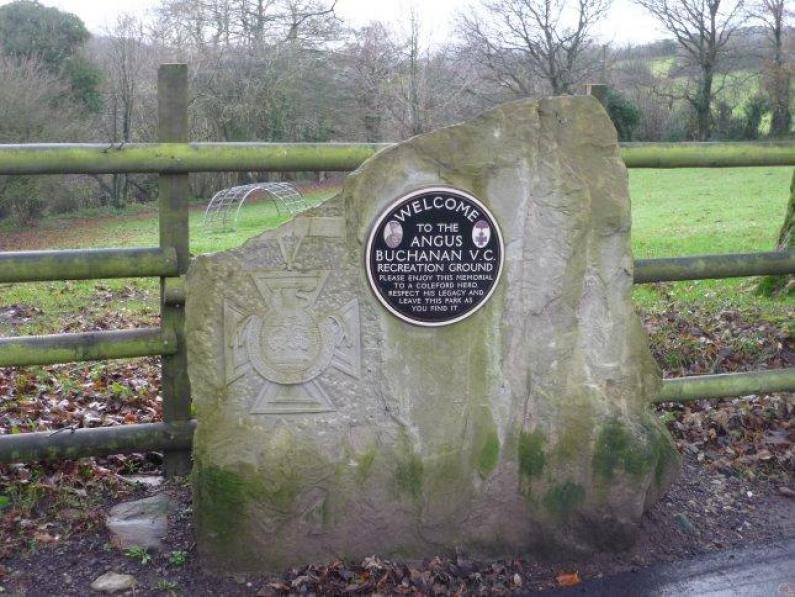
The Angus Buchanan VC Recreation Ground in his hometown of Coleford. Credit: Forest of Dean Local History Society
Now, Jesus College is delighted to name the Tower Room (below) in our new Cheng Yu Tung Building in Buchanan’s honour, thanks to a generous gift by alumnus Christopher Richey (1984, MPhil Management Studies) and his family. The £1m gift, announced earlier this year, will enable the creation of a new endowed graduate scholarship to support home graduate students in any subject, and forms part of the College’s strategy to create more equitable opportunities for postgraduate study at the University of Oxford. The naming of the Buchanan Tower Room will ensure that one of our most courageous former students is remembered and appreciated by generations of students to come.

